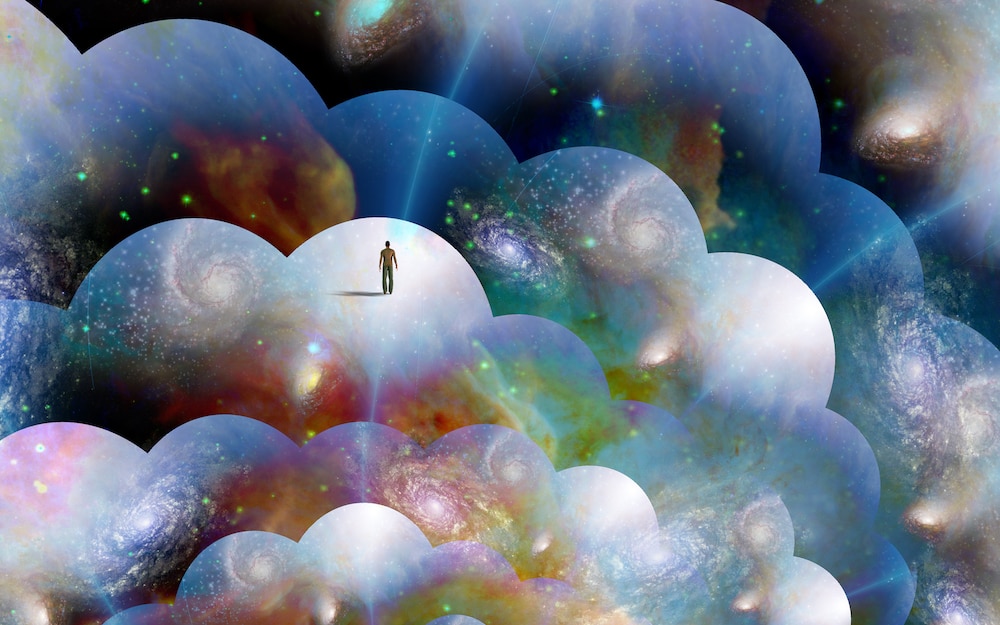Create a free profile to get unlimited access to exclusive videos, sweepstakes, and more!
We might be living in a multiverse, but only the other you could know for sure
Millions, possibly billions, of parallel universes could be out there if the universe is eternally inflating.

Somewhere there might be another you, standing alone on the beach of an alien planet, watching waves crash on the shore until — wait, that was a scene from Doctor Who.
Millions, possibly billions, of parallel universes could be out there. Whether or not the multiverse is any more real than that scene is something that has been keeping physicists (and their hypothetical mirror selves in other universes) up at night. Phenomena that occur and are still happening in the universe seem to either allow for it or at least not eliminate the possibility. There is now new research that might explain why a multiverse may or may not exist.
The universe keeps inflating. If eternal inflation is generic, meaning that it is the result most models of inflation end up with, that could mean there are many neverending universes, and we are living in a sort of a fractal. There would be infinite copies of you taking a shower or bingeing Netflix at the same time. Researchers Anthony Aguirre and Ross Greenwood of UC Santa Cruz, who coauthored a study recently submitted to The Journal of Cosmology and Astroparticle Physics wanted to see whether these models held up to suggest a multiverse.
“We looked at several modes of eternal inflation subject to several different measures on the space of inflation models,” Greenwood told SYFY WIRE. “For some of those combinations, eternal inflation was easily generic; for some it was generically absent; and for a few it was more nuanced.”
Previously, eternal inflation was thought to be generic across most models of inflation. This does’t mean inflation that goes on forever and ever is not common. The thing about theoretical physics is that there are just as many, if not more, gray areas as there are possibilities. It could be that the models used by Greenwood and Aguirre may have made sense but were not the correct models. While other methods have suggested otherwise, there is no overwhelming reason to believe the models tested are or they aren’t the right way to see inflation.
Those models that did not open the portal to a multiverse kept it shut for several reasons. There are energy fields all over the universe, and in some scenarios, the inflation field, which is behind inflation, didn’t fluctuate enough. Fluctuations were too small or infrequent for the field to expand so it can fit more and more stuff as the universe keeps spreading. Without the field being able to either keep the right fluctuations going or push even faster expansion, there is no way at least one type of eternal expansion could happen. That isn’t the only multiverse fail.
“Genericness is hard to grasp because it depends entirely on the choice of a measure, which defines how we assign probability to different possible outcomes of a random draw and how we combine those probabilities,” Greenwood said.
Eternal inflation could happen if the field if it is always moving, with it constantly passing by its high point in all the regions in space through which it expands, so he middle will never get a rest. If it does the opposite, inflation cannot happen that way. Expansion is also held back if the field can’t fall into the the trap of its minimum potential function. This minimum would have to have positive vacuum energy, or the underlying background energy throughout the universe, for eternal inflation to happen. Extremely low vacuum energy would prevent that inflation.
Because genericness is not easily fathomed, the researchers purposely chose simple models so they could work with something solid. Whether those models were right or wrong is something that cannot yet be proven. This is what is so problematic about someone claiming to have the right measure for eternal inflation to happen; they would have to be able to prove it. Greenwood hopes to see inflation theory incorporated into the Standard Model of particle physics, which might reduce possibilities or provide new parameters for eternal inflation.
“Ultimately, the question of genericness reduces to ‘Assuming that we exist with the laws of physics we have (or think we have), how likely is this one behavior that may or may not turn up in a universe governed by those laws?’" he said. “It depends a lot on that 'may or may not.'"


























